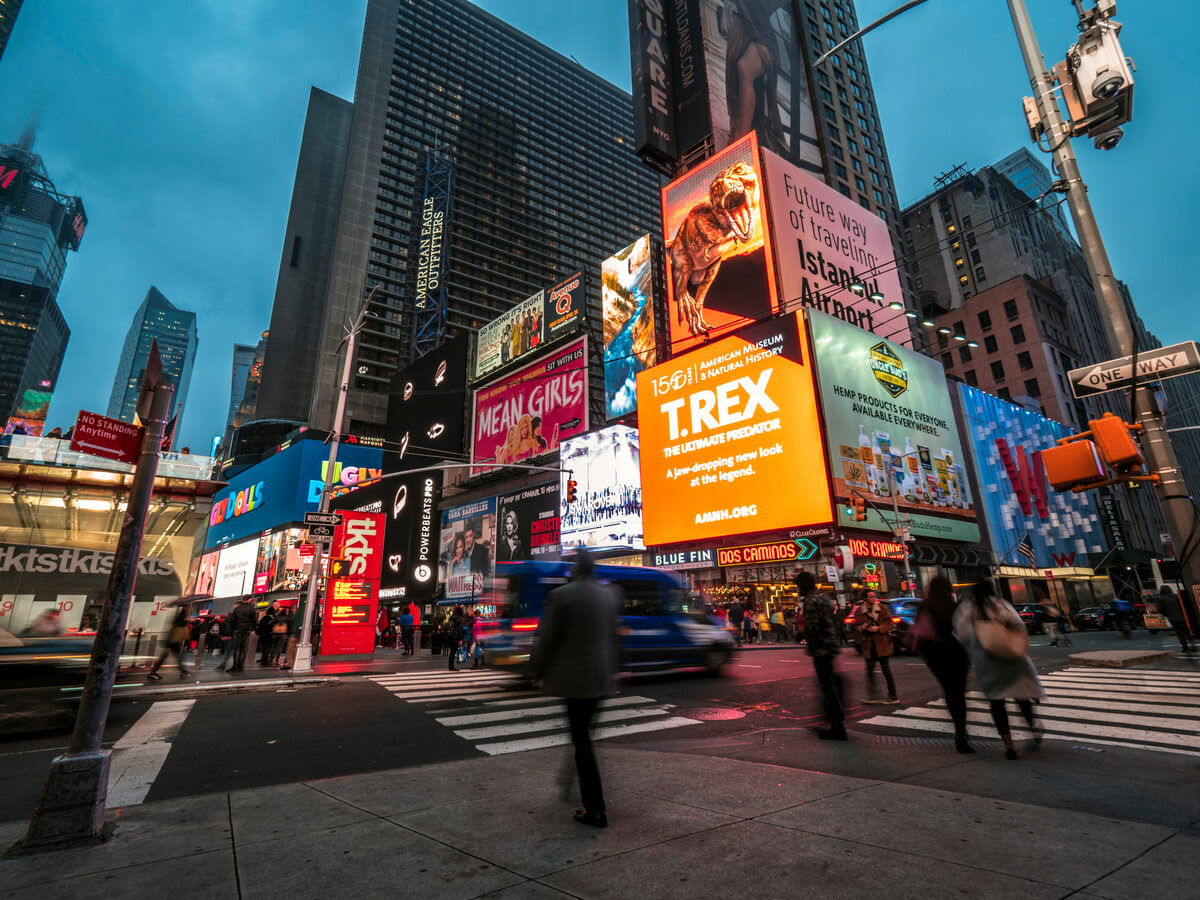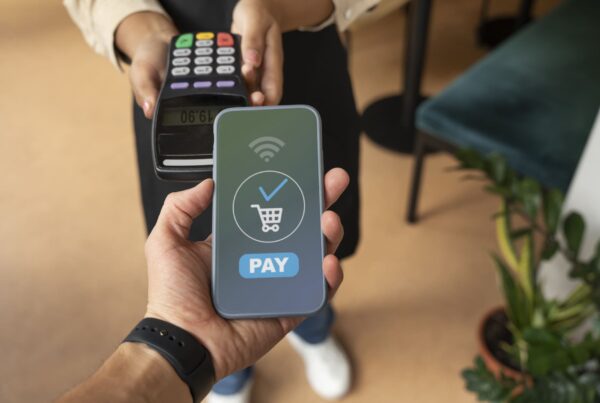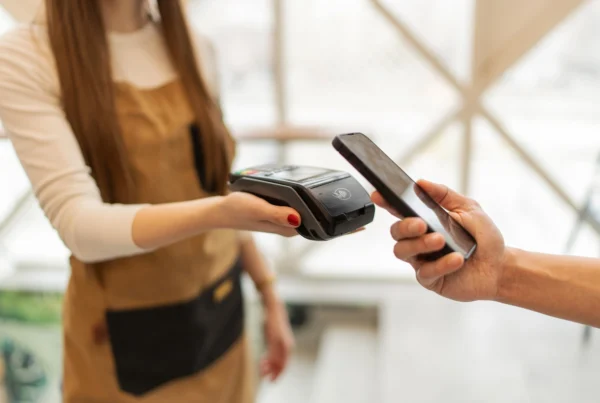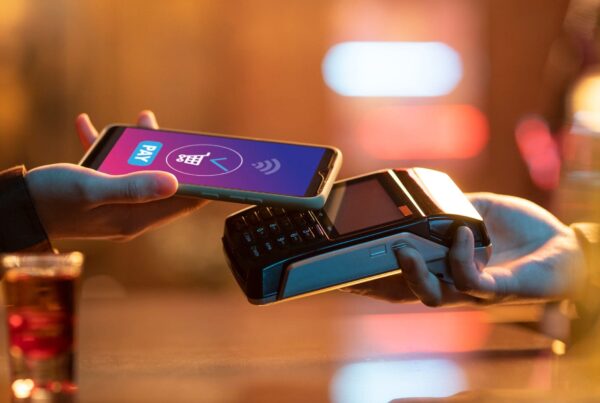Despite the substantial rise in online shopping, conventional brick-and-mortar stores continue to play a crucial role as an effective sales channel. Regarding driving foot traffic to physical stores and boosting brand recognition, many retailers agree that digital signage has become one of the most effective methods. It also helps reduce costs, improve in-store communication, and enhance customers’ purchasing decisions. So what is retail digital signage, and how to choose a suitable one for your store? Let’s explore our ultimate guide below.
What is digital signage?

Digital signage refers to the use of display technologies such as LCD monitors, LCD screens, projection, and LED walls to show webpages, films, menus for restaurants, marketing messages, and digital photos.
Many retail stores and restaurants often use retail digital signage to provide wayfinding and advertise their new products or services.
What are the benefits of retail digital signage?

Why does a retail store need digital signage? There are numerous benefits that retail digital signs can bring to your business.
Drive more traffics to physical store
The first and foremost benefit of digital signage is driving traffic to the stores. According to ScreenCloud, 8 out of 10 customers have entered a store after seeing digital signage. Like classic light boxes, moving images always compel people’s attention when they pass by.
Enhance purchasing decisions and gain more sales
More than 40% of consumers agree that providing pertinent information close to the point of purchase and digital displays can influence their purchasing decisions. Digital signage in retail stores gives customers a more genuine look and feel of a product by emphasizing its unique qualities, perspectives, or design through videos or images.
Additionally, 80% of the brands using digital signage displays report that they have increased 33% more sales. It can produce an immersive consumer experience and increase the potential for cross-sells, up-sells, and impulsive purchases. You can achieve that by swiftly adjusting and deploying compelling information when and where it matters most.
Provide entertainment
It’s beneficial for your business to keep visitors entertained. A new study by Urban Land Institute reveals that 50% of male and 70% of female millennials consider shopping a source of entertainment. Consumers enjoy learning new things and sharing what they have learned with their loved ones.
Fortunately, entertaining your consumers with digital displays is simple and inexpensive. You can display multimedia content, such as graphics, photos, and videos on retail digital signs from a variety of sources, including social media.
Increase social media presence
Today, any commerce business must have a strong online presence. One of the main responsibilities of retail digital signage has evolved into promoting a company’s websites and social media accounts.
Retailers can present their social media contact and websites along with informative or enjoyable content on digital screens in stores.
This motivates customers to look up and subscribe to their pages, which helps merchants grow their online audience and nurture them further to generate sales.
Improve internal communications
Digital signage in retail stores can focus not only on customers but also on store personnel. You can install retail signage displays that show employee-specific information like a working schedule, employee bonus, business announcement, birthday notices, etc. That will help strengthen the business culture and improve the working environment and employee communication.
Enhance your brand awareness
Signage for retail stores assists to build a more favorable perception of your company in the minds of customers. The more customers see your brand image, the more they can remember you. They will be more inclined to return to your store frequently as a result. And once they do, they are also more likely to spend more money there.
Reduce cost
Digital signage software helps companies cut costs for publishing brochures, printing menu boards, conventional billboards, and large posters. Besides, you can save time and money on shipping and storing these marketing materials. This gives you more resources for producing high-quality content and visuals to catch your customers’ attention.
Boost brand loyalty
With digital signage, you can promote your newsletters, mobile apps, and customer loyalty program. In this way, you can increase touchpoints with your customers, get closer to them, and turn them into regulars.
Components of a digital sinage

There are 5 main components of a digital signage system.
Digital signage and displays
Retail sign displays are available in many different formats, including standard shelf-screen, digital menu boards, stand-alone displays, digital kiosks, transparent LED displays, or enormous video walls. Nowadays, with technological advancement, digital screens are becoming increasingly accessible and widely used by different businesses.
Support hardware
Support hardware is more than brackets to anchor a digital display to the wall, floor, or table. It helps make your displays more pleasing and visible to your audience.
Additionally, remember to evaluate where to attach the mounting hardware while installing retail signage. If not, you’ll need an extension cable which will increase your cost.
You may note that when using digital signage solutions with several screens, the upfront cost seems to be affordable, but it can pile up rapidly. Thus, check your hardware list carefully.
Media players
A media player is a small gadget that connects to a digital display and transmits content to it. You can imagine it as the brain of your digital signage solution, with the screen display serving as the body and the mounting hardware as the face. The latest media players can connect to Wifi, allowing you to access a web portal to modify the digital signage solution.
Content management system
You can use a platform called a content management system to manage and update what’s shown on your digital signage. Besides, you can integrate it with your retail store operations system to streamline all processes in one single platform. If you use a web-based digital signage solution and have internet connectivity, you can update your content from any location, anytime.
Nowadays, most firms prefer cloud-based software since it allows real-time upgrades from any location with an internet connection. This means that if you run a multi-location business, you don’t need to set up separate control rooms at each location. Instead, a web gateway will allow you to remotely monitor your entire network. As a result, you can rapidly update your newest products and discounts across locations.
Digital content
Content is the center of your digital signage solution since it can tell your brand stories and motivate customers to take action. There are many factors to keep in mind when producing quality content for your digital marketing display such as your branding strategy and target audience. To achieve your marketing objectives, you should work with a full-service digital signage supplier who can assist you in creating engaging content and providing technical assistance.
Digital signage examples

There are 4 main types of digital signage that are popularly used by big brands to improve customer experience. Let’s discover the top popular types below.
Digital displays
Digital displays are the most popular form of digital signage. Almost all restaurants and retail stores use them to advertise specials, provide taglines, mission statements, or highlight menu items. Below you can see an example of digital displays in Starbucks. They are using digital displays to present their signature dishes and their menu.
Besides, retail stores also can employ customer-facing displays in the checkout process to show customers their bill information and product details. This will help increase customer experience and engagement with your brand.
Smart mirrors
A smart mirror is a two-way mirror with an electronic display hidden behind the glass. In the form of widgets, the display can present the user with a variety of data, including weather, time, date, product details, and news updates.
For example, Ralph Lauren—a leading fashion brand—has equipped smart mirrors in their fitting rooms. Customers can engage with the mirror by changing the lighting and choosing different colors and sizes for their clothes. Additionally, the mirror provides additional advice to the clothing that the user is trying.

Self-checkout kiosks
Self-checkout kiosks allow customers to make purchases on their own without help from sales staff. Retailers like Walmart, Target, and CVS have widely embraced self-checkout kiosks because they allow customers to make purchases quickly and save a lot of time.
Interactive screens
These are effective interactive signages to draw clients into a store and keep them interested. These screens are cutting-edge and use high-tech features (like Bluetooth, RFID, and infrared touch). For example, Nike—a leading sports shoe brand—has employed interactive screens in their retail stores to enhance customer experience. Customers can interact with the brand and its sports-loving community at the point of sale with this touchscreen application.
Cost of digital signs

You may wonder: how much does digital signage cost? The answer is that it comes from many different parts.
Cost of main components
Display screen
The display screen price can range from $1,000 to $20,0000 depending on the type you use. A normal digital display such as a smart TV with ultra HD picture and Dolby Vision HDR can cost around $1,300. And a 49″ LCD video wall that is 2×2 in size typically costs between $19,000 and $20,000 to purchase.
Media player
A digital signage media player is necessary for any digital signage in order to stream content. Each player has distinct features, computing power, and memory. Remember to select a media player carefully because your signage may have an impact on all of these elements. A good media player can cost from $200 to more than $1,000 with a mini PC as a player. It all depends on your retail store’s needs to decide which type is the best for you.
Support hardware
Mounts for digital signage might cost as much as $350 or more. High-grade cables should be used for digital signage cabling since they are faster and more dependable. For 6 feet of wire, a 4K Displayport to HDMI connection costs approximately $13.
Software license
There are two types of digital signage software that brands can choose: cloud-based software and non-cloud software. You can pay a monthly fee for cloud-based software and pay one time for non-cloud software. Regarding cost, non-cloud software seems to be a better option. Note that a price that includes maintenance and upgrades is a significant advantage. On the other hand, you will need technical expertise when using non-cloud software.
Installation cost
By geography and service provider, labor expenses can vary significantly. For example, installing a basic 55′ wall-mounted display and a whole wall-sized screen is totally different from one another. You may need to pay about $200 to install a single screen.
You should get two or three pricing quotes for major projects because the costs might vary greatly. Additionally, you should ask experienced workers to install the signage since its elements like wiring, mounting, and screen angles require a lot of careful work.
IT support and maintenance
Every digital system needs periodic maintenance and troubleshooting. Therefore, competent and knowledgeable in-house IT staff should be able to handle this on their own. If not, outsourcing makes sense. Digital signage experts are good at problem-solving. They can solve problems more quickly with less cost.
How to choose the right digital signage solution?

There are many factors to consider when choosing the digital signage solution for your retail entities. The right solution will meet your budget plan, provide needed support, and remote monitoring, as well as ensure scalability, stability, and security.
Media support
The digital signage program should be able to handle almost all important media formats such as MP4, JPG, PNG, PDF, and Windows Media. It enables you to easily produce content to show on a variety of devices.
Remote monitoring
It can take a lot of time to manually update all of your signs’ software. As your network expands, the may become more complicated. Therefore, you should get signage software that supports mobile devices and has remote updating capabilities to spare you some hassles.
Scalability
It takes a lot more work to switch from one platform to another each time you outgrow a particular solution. By choosing a digital signage solution that can easily scale up with your company, you can stay out of this dilemma.
Stability
When weighing your alternatives, we highly recommend that you give the software’s stability top priority. An almost flawless uptime characterizes a trustworthy platform. Instead of stressing over whether or not your application has crashed again, you will have more time to focus on more crucial parts of managing your business.
Security
Digital signage is vulnerable to hacking and other harmful uses because it is all digital, can be placed outdoors and managed in a variety of ways.
Always guarantee that your network is not left exposed, and consider investing in a digital signage software platform that has strict security built-in features.
Price
Prices will vary according to the providers and your usage requirement. Remember to choose a scalable solution that can be customized to your needs when you grow your business.
In general, digital signage retail can bring huge benefits to a retail firm. It can help improve your brand image and awareness, enhance customer purchasing decisions, and increase sales. With these outstanding features, digital retail signage has become an important tool to help a brand stand out in the market.
FAQs
What are the best industries for digital signage?
Businesses use digital signage to advertise their goods and services and give customers important information. Therefore, it can benefit businesses in many sectors like education, healthcare, transportation, entertainment, tobacco, liquor, banking, retail stores, restaurants, real estate, and vape and cigar shops.
How is digital signage attracting customers?
Digital signage helps businesses draw clients’ attention to their goods or services and stimulate them to visit their stores with interesting material displayed on screens. Additionally, well-positioned digital signage can be a potent marketing tool to spread and promote your business.
Investing in digital signage is a fantastic choice if you’re searching for a means to enhance foot traffic and sales. If your budget allows, you may involve design experts in creating a distinctive and eye-catching display to make your company stand out while following your brand guidelines.














I completely agree! LED digital signage is a powerful marketing tool that can help businesses effectively reach and engage with their target audience. Its versatility, flexibility, and eye-catching display make it a must-have for any business looking to stand out and make an impact in the competitive market.
Excellent article! Digital signage is indeed a game-changer in how businesses communicate visually. From improving customer engagement to streamlining internal communications, its applications are endless. Excited to see how innovations like AI and real-time content updates continue to shape the future of digital displays!